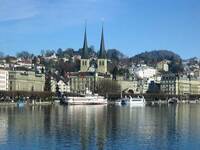- England
- Scotland
- France
- Holland
- Germany
- Italy
- Spain
- Portugal
- USA
- China
- Japan
- India
- Iran
- Advice
- Gardens
- England
- Scotland
- France
- Holland
- Germany
- Italy
- Spain
- Portugal
- USA
- China
- Japan
- India
- Iran
- Advice
- Garden Tours
Book: Landscape Planning and Environmental Impact Design: from EIA to EID
Chapter: Chapter 5 Reservoir planning and design
Reservoirs could become urban development zones. Reservoir planning has entered a third phase. In the first phase, from 1850-1950, reservoirs were designed with conifer forests and architectural features to contrast with their surroundings, and the public was excluded. In the second phase, after 1948, reservoirs were planned to accommodate limited public access and to look as much like natural lakes as possible. In the third phase, reservoirs are likely to become highly intensive recreational areas, surrounded by yacht marinas, restaurants, second homes, holiday villages, golf courses, riding stables and leisure facilities of every kind. This carries a danger. Waterside land has always been valued. It is a commonplace of geography that great cities develop beside rivers, coasts and lakes. Studies of outdoor recreation always show water to be the most powerful magnet for tourists. The cumulative demand for waterfront land may have a severely detrimental impact on the reservoir environment. It requires thoughtful EID. At present, the level of development beside reservoirs correlates with their age, not with their location or character. Many preï¾1948 reservoirs are closed to the public, even in densely populated urban areas. Reservoirs of the 1950s and '60s have a similar level of development for walking, fishing and sailing, regardless of whether they are in towns, like the Queen Mother Reservoir, or in an agricultural areas, like Grafham Water. Postï¾1973 reservoirs, like Rutland, Kielder, and Bewl Bridge are in open country but have the most extensive recreational development.
